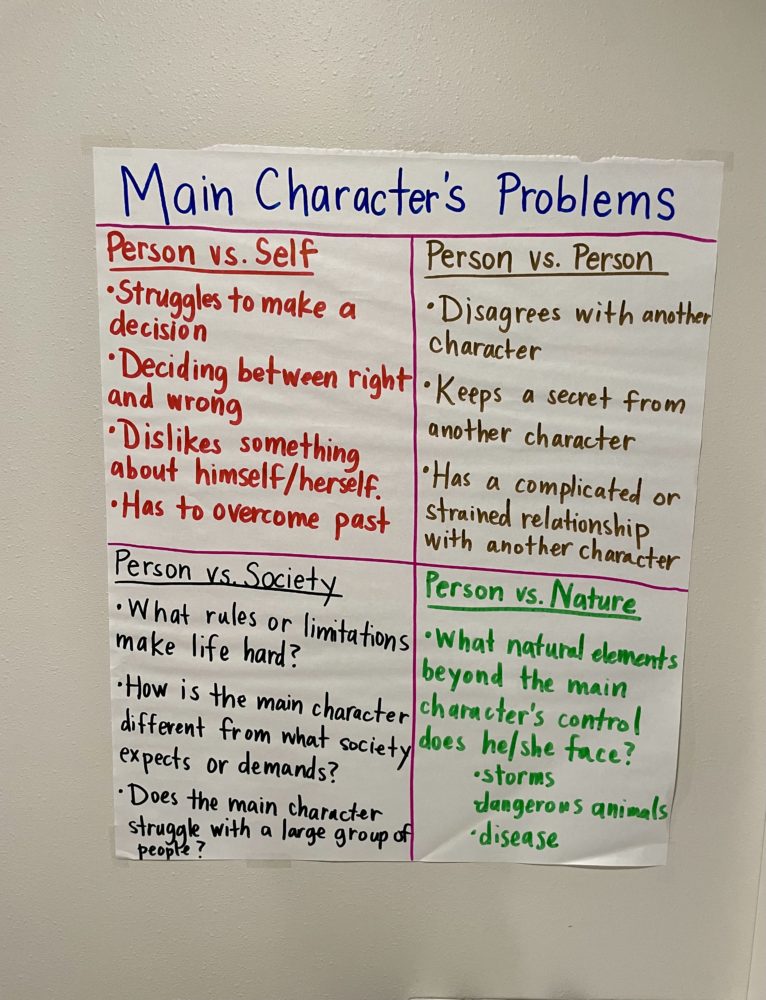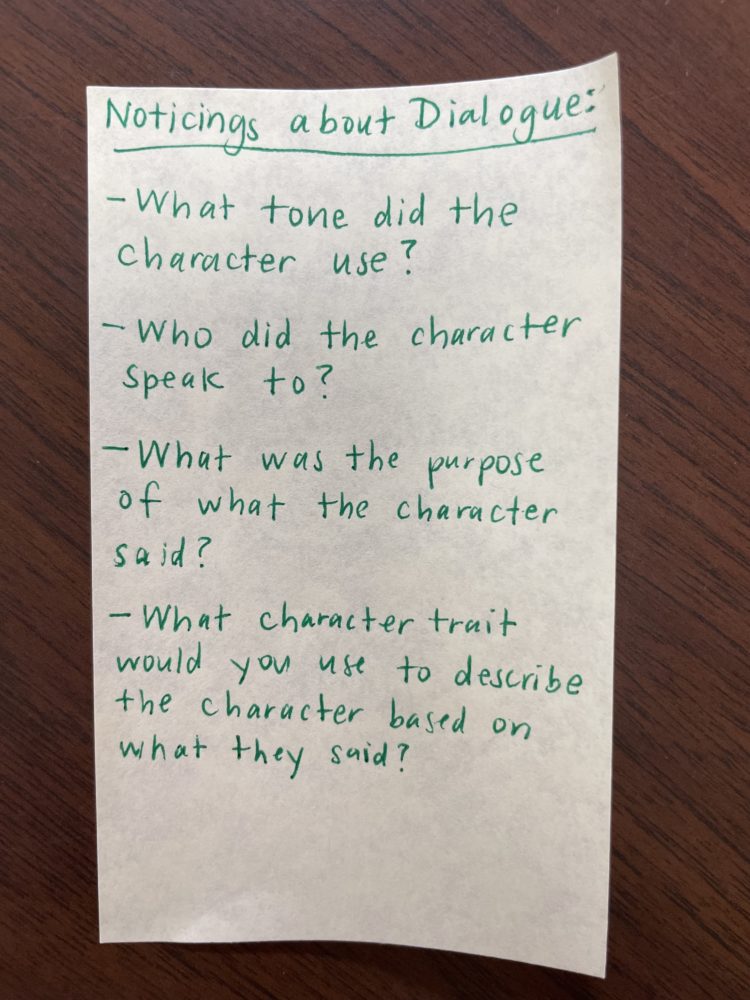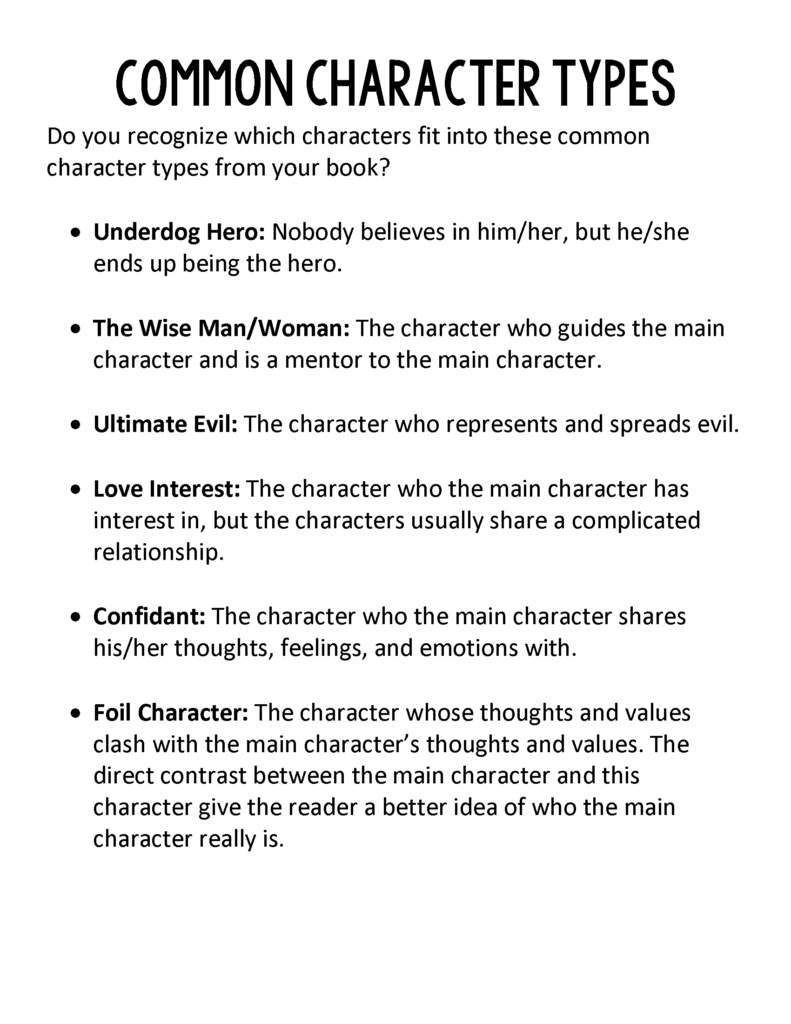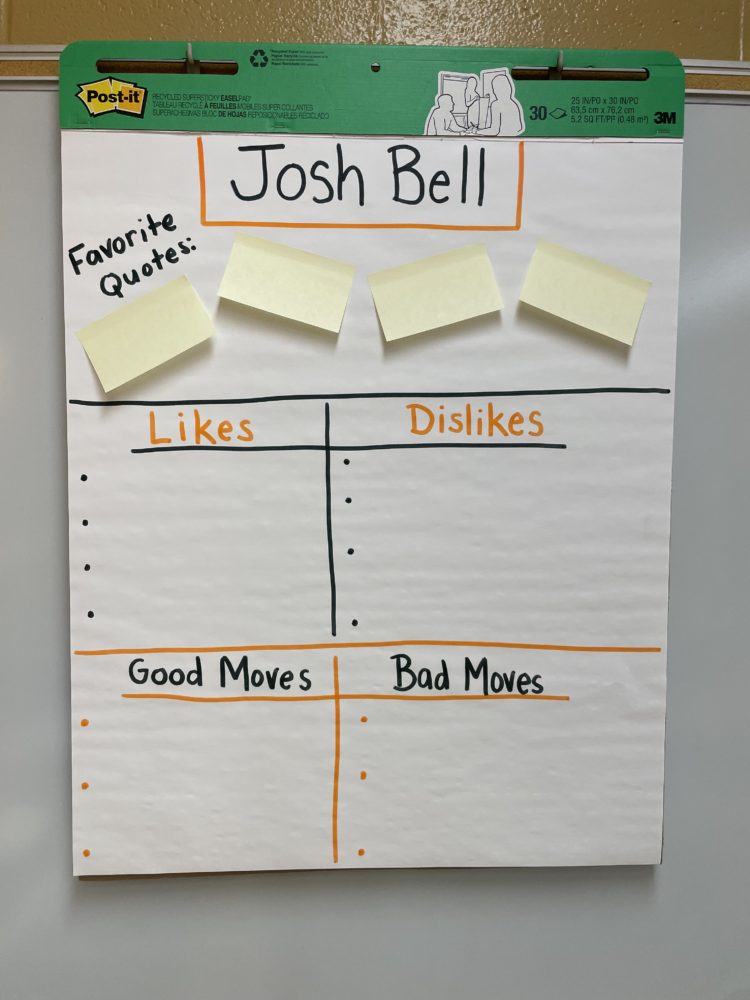When we teach the same reading standards and content year after year after year, it’s easy to get stuck in a pattern. In this blog post, I’m bringing you FIVE different ideas about how ONE topic can be taught. If we’re doing an interactive read aloud, guided reading, literature circles, reading strategy groups, book clubs, reading conferences, or a combination of these instructional contexts, chances are we’re talking about the characters in a book. The way authors develop characters and have them interact with one another is my favorite thing to consider as a reader. We can steer our students in many different ways when it comes to studying the characters they meet in their books. Today, I’m going to share 5 reading lesson ideas that will get students thinking about characters.
Reading Lesson Idea One: Main Character’s Problems
The main character’s problem is what drives the conflict of the story. Early on in the book, go over the four types of conflict (person vs. self, person vs. person, person vs. society, person vs. nature) with students and have them identify the developing conflict the main character is having. An added twist to this lesson is to ask students to make predictions about how the main character will try to solve each developing problem/conflict. This is different from how the main character SHOULD solve the problem. If we know anything about main characters, it’s that they usually have several flaws that keep them from solving their conflicts the logical way.

This full lesson is also available as one of my “Grab & Go Reading Lessons.” Each reading lesson includes a detailed teacher plan, formative assessment with proficiency rubric, modeled example of the formative assessment, reading conference prompts, and lesson presentation in PowerPoint and Google Slides format. Here is the link to the reading lesson on main character problems: Main Character Problems Reading Lesson
Reading Lesson Idea Two: Consider Different Character’s Perspectives
The author of a book intentionally chooses the main character to be the main character for a reason, but what if another character in the book was the one telling the story? What would different plot events look like from a different character’s perspective?
If you’re looking to incorporate a creative writing activity into a reading lesson, then one of my favorites is to ask students to pick an important plot event and rewrite the plot event from a different character’s perspective. My mind immediately goes to The Hunger Games at The Reaping. What would that scene look like from Prim’s point of view instead of Katniss’s point of view?
If you’re looking for a reading lesson that gets students thinking about different character’s perspectives, here is one ready to go: Considering Different Characters’ Perspectives in Literature
Reading Lesson Idea Three: Tracking Character Dialogue
This is a great one for an interactive read aloud that you’re reading to the whole class or for students to complete with literature circle groups. Have each student select one character who speaks through dialogue in a chapter you’re about to read. Several students will have the same character. Each time students’ selected character speaks, students jot down noticings about what the character said. When the chapter is over, debrief by doing a jigsaw discussion. Have students get together with other students who focused in on the same character and share what they noticed about what the character said through dialogue. Then put students in groups so that each person in the group focused in on a different character and each student shares out three noticings about the character they focused in on.

Reading Lesson Idea Four: Common Character Types
It’s no coincidence that we experience the same character types over and over again as readers, regardless of the books we read. This reading lesson idea is a fun one because it helps students see the origins of the characters they meet in books. Many of these character types originate in myths, traditional stories, and religious works. Have students list the names of the characters in the current books they’re reading. Which character fits into which character type and why?
A complete reading lesson on character types can be found here: Identifying Character Types in Fiction

Reading Lesson Idea Five: Interactive Character Anchor Charts
If you’re doing an interactive read aloud with your whole class, this is an idea that will help students visualize the main character as a multi-dimensional, imperfect, changing person. A lot of reading lessons about characters look at a character in one moment of the plot, but this idea is one that keeps students thinking about the main character across the entire book.
On the anchor chart, label it with the main character’s name and leave spaces for different items such as favorite quotes the main character says, their likes/dislikes, good moves/bad moves they make, etc. Students can help you build the anchor chart as you read the book aloud. Here is an example I have set up for our first read aloud of the school year, The Crossover by Kwame Alexander.

Other Grab & Go Reading Lessons that focus on studying characters in literature are listed below:
- Describing Character Connections in Literature
- Comparing and Contrasting Characters in Literature
- Inferring Character Traits in Literature
- Analyzing Character Changes in Literature
I hope these ideas were helpful as you think about ways to get students thinking and talking about characters this school year!
Kasey





